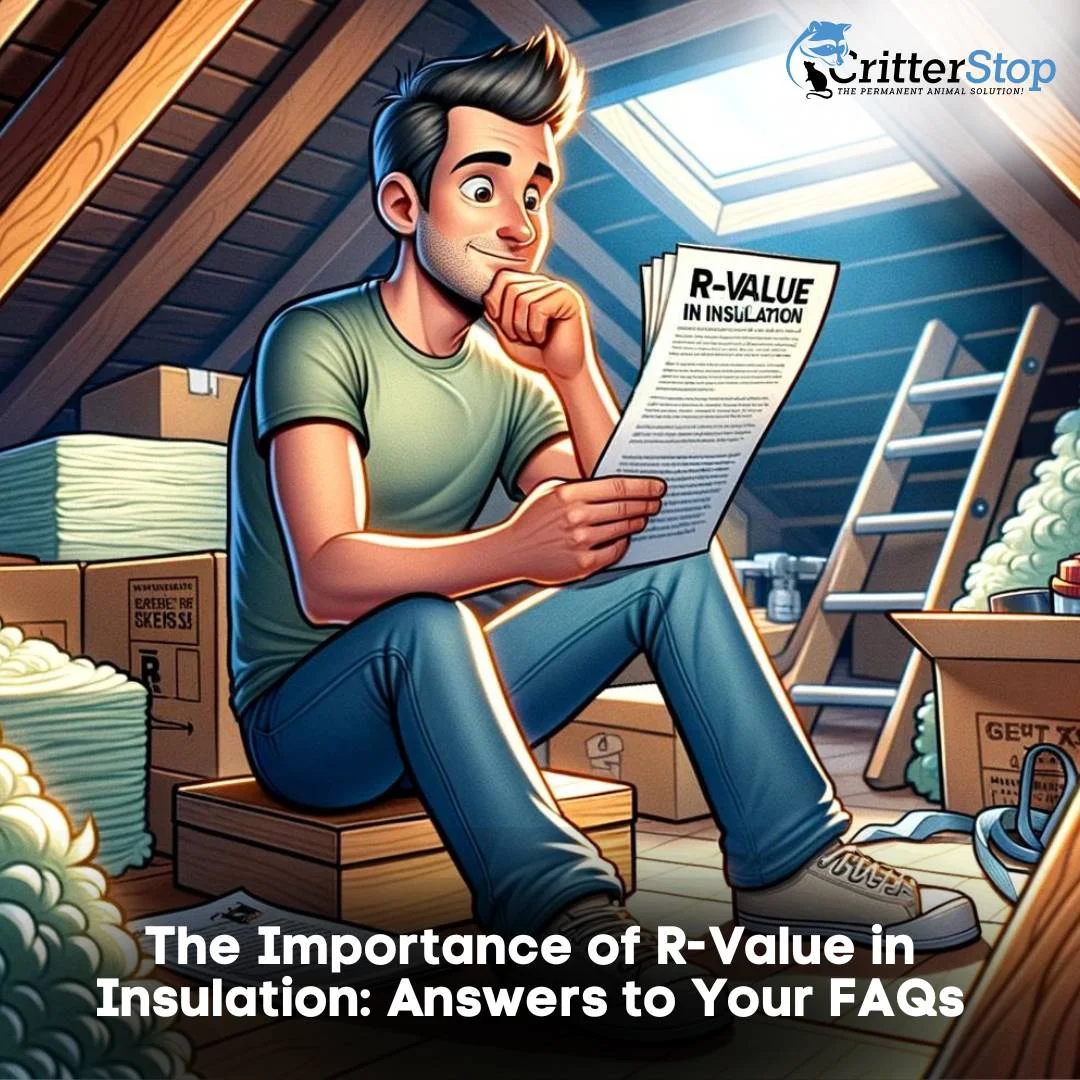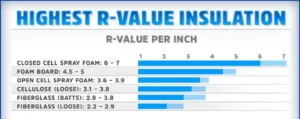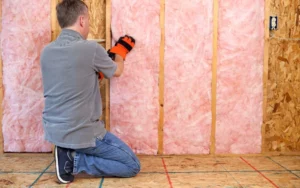
In the world of insulation, R-value is a term that you may have come across. But what exactly does it mean and why is it important? In this article, we will answer your frequently asked questions about R-value and shed light on its significance in insulation.
Let's start by demystifying the concept of R-value. Put simply, R-value measures the thermal resistance of a material. It indicates how effective the material is at resisting the flow of heat. The higher the R-value, the greater the material's resistance to heat transfer.
R-value is crucial in insulation because it determines how well your home is protected against temperature fluctuations. A higher R-value means better insulation, leading to improved energy efficiency, reduced utility bills, and a more comfortable living environment.
But what exactly does it mean for a material to resist the flow of heat? To understand this, we need to delve into the fascinating world of thermodynamics.
Thermodynamics is the branch of physics that deals with the relationships between heat and other forms of energy. It explains how heat moves from one object to another and how it affects the temperature of a system. When it comes to insulation, understanding these principles is key to appreciating the importance of R-value.

Now that we understand what R-value represents, let's delve into the science behind insulation efficiency. Insulation works by slowing down the conduction, convection, and radiation of heat. The higher the R-value of the insulation material, the slower the heat transfer will be.
Conduction is the process by which heat is transferred through direct contact between objects. Imagine touching a hot pan - the heat from the pan is conducted to your hand, causing it to feel hot. Insulation materials with high R-values, such as fiberglass or foam, are designed to minimize conduction by trapping air pockets within their structure. Air is a poor conductor of heat, so these air pockets act as barriers, preventing the transfer of heat.
Convection, on the other hand, involves the movement of heat through a fluid, such as air or water. When warm air rises and cool air sinks, convection currents are created. Insulation materials with high R-values disrupt these currents by creating a barrier that hinders the movement of air. This helps to maintain a more stable temperature inside your home, regardless of the temperature outside.
Radiation is the transfer of heat through electromagnetic waves. Unlike conduction and convection, radiation does not require a medium to travel through. Insulation materials with high R-values, such as reflective foils, are designed to reflect radiant heat away from your home, reducing the amount of heat that enters or escapes.
For example, during the winter, insulation with a high R-value traps the warm air inside your home and prevents it from escaping. Conversely, in the summer, it helps to keep the hot air outside from seeping in. This insulation barrier acts as a thermal shield, maintaining a consistent temperature indoors and reducing the reliance on heating and cooling systems.
So, the next time you hear someone mention R-value, you can impress them with your knowledge of how it relates to insulation efficiency and the science behind it. Understanding R-value is the first step towards making informed decisions about the insulation in your home, ensuring that you create a comfortable and energy-efficient living space.
When it comes to enhancing your home's insulation, there are numerous strategies you can employ to maximize energy efficiency and year-round comfort. By implementing these simple yet effective techniques, you can significantly improve your home's R-value and reduce energy consumption.
One of the first steps in improving insulation is to identify and address any air leaks. These leaks can be found around windows, doors, and other potential gaps in your home's structure. By sealing these gaps with weatherstripping or caulking, you can prevent hot or cold air from entering or escaping, thereby enhancing your home's energy efficiency.

In addition to sealing air leaks, adding insulation to key areas of your home can further boost the R-value. One area to focus on is the attic, as it is a common source of heat loss in many homes. By insulating the attic with materials such as fiberglass batts or blown-in cellulose insulation, you can create a barrier that prevents heat from escaping during the winter and entering during the summer.
Another area to consider is the walls. By adding insulation to the walls, you can reduce heat transfer and improve energy efficiency. This can be done through various methods, including blown-in insulation or the installation of insulation boards.
Lastly, don't forget about the floors. Insulating the floors can help prevent heat loss and increase comfort, especially in areas with crawl spaces or basements. By insulating the floors with materials such as foam boards or spray foam insulation, you can create a thermal barrier that keeps your home cozy all year round.
While improving the insulation in your home, it's important to consider upgrading the insulation materials themselves. In recent years, there have been significant advancements in insulation technology, resulting in more efficient options with higher R-values.
One popular choice is spray foam insulation. This type of insulation is known for its excellent energy-saving properties. It provides a seamless and airtight barrier, effectively reducing heat loss and gain. Spray foam insulation can be applied to various areas, including walls, attics, and crawl spaces, making it a versatile option for improving your home's R-value.
Another option to consider is blown-in cellulose insulation. Made from recycled materials, such as shredded newspaper or cardboard, blown-in cellulose insulation is an environmentally friendly choice. It can be easily installed in attics and walls, filling gaps and voids to create a more effective thermal barrier.
Fiberglass batts are also a popular choice for increasing the R-value of your home. These pre-cut insulation panels are made from glass fibers and can be installed in walls, attics, and floors. Fiberglass batts are known for their durability and affordability, making them a practical option for homeowners looking to improve insulation.

By upgrading your insulation materials to more efficient options, you can enhance your home's R-value and enjoy the benefits of improved energy savings and increased comfort.
When it comes to insulating your home, choosing the right R-value is crucial. The R-value measures the insulation's ability to resist heat flow, and selecting the appropriate level can significantly impact your energy efficiency and comfort. While it may seem like a simple decision, there are several factors to consider before making a final choice.
Climate is one of the primary factors that should influence your decision. Different regions experience varying temperatures and weather conditions throughout the year, and your insulation needs to be able to handle them. In colder regions, where harsh winters are common, a higher R-value is often necessary to keep the cold air out and the warm air in. On the other hand, in milder climates, a lower R-value may be sufficient to maintain a comfortable indoor temperature.
Another important consideration is the design of your home. Factors such as the size, layout, and construction materials can affect the amount of heat transfer that occurs. A well-insulated home with proper sealing and insulation in walls, floors, and attics can significantly reduce energy loss and improve overall comfort.
Local energy codes should also be taken into account. These codes set minimum requirements for insulation levels in different regions, ensuring that homes meet certain energy efficiency standards. Familiarize yourself with these codes to ensure compliance and to make an informed decision about the R-value that is appropriate for your home.
Furthermore, the type of heating and cooling system you have plays a role in determining the optimal insulation level. Different systems have different efficiency ratings and requirements, and your insulation needs to align with those specifications. Consulting with a professional insulation contractor who can assess your specific needs and recommend the most suitable R-value for your home is always a wise decision.
If you are particularly interested in maximizing energy efficiency and reducing your carbon footprint, there are formulas available to help calculate the ideal R-value for your home. These formulas take into account factors such as the square footage of your home, the type of insulation being used, and your desired energy-saving goals.
However, it's important to note that these formulas provide a general guideline and should not be considered as the sole determining factor. Each home is unique, and there may be additional considerations that the formulas do not account for. Seeking expert advice from insulation professionals who have experience in assessing energy efficiency is crucial for accurate recommendations tailored to your specific circumstances.
In conclusion, determining the right R-value for your home requires careful consideration of various factors, including climate, building design, local energy codes, and your heating and cooling system. By making an informed decision and consulting with professionals, you can ensure that your home is properly insulated, energy-efficient, and comfortable throughout the year.
Insulating your home doesn't have to break the bank. There are budget-friendly insulation options that can improve your R-value without draining your wallet. One such option is insulating blankets, which are easy to install and can be placed over existing insulation to enhance its performance.
Weatherstripping is another cost-effective solution that can significantly reduce drafts and improve insulation in windows and doors. By addressing these common areas of heat loss, you can achieve noticeable energy savings without a substantial investment.
Cost-effective insulation materials can play a vital role in maximizing your energy efficiency while keeping your expenses in check. Fiberglass batts, for instance, provide an excellent balance between affordability and performance. They are easy to handle and install, making them a popular choice among homeowners.
Another option is blown-in cellulose insulation, which is composed of recycled materials and offers both thermal and sound insulation benefits. This environmentally friendly option is not only cost-effective but also contributes to sustainable living.
In conclusion, understanding the importance of R-value in insulation is essential for every homeowner. By improving your home's R-value, you can enhance energy efficiency, lower utility costs, and create a more comfortable living environment. Whether through simple DIY methods or upgrading to more advanced insulation materials, there are solutions available to suit every budget and insulation need. Don't let heat loss or gain affect your home's comfort and energy consumption – harness the power of R-value and enjoy the benefits of a well-insulated home.